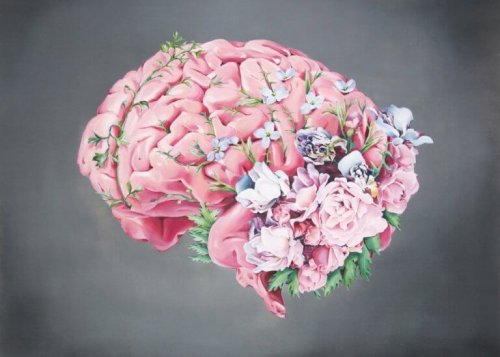Are You Made of Plastic, Glass or Steel? Keys on Resistance


Written and verified by the psychologist Valeria Sabater
Are you made of plastic, glass, or steel? The way we face everyday difficulties determines the material we’re made of. Now, the keys to resistance tell us that we can always alter the elements that shape us. This way, you’ll become a more optimal material, one that’s halfway between bamboo and graphene.
There’s a decisive aspect when it comes to enjoying a proper mental and emotional health. It’s understanding what mechanism we use to face life’s obstacles. Two of the most common responses we apply are avoidance and stillness or “non-resistance”.
“The truest measure of all strength is the resistance that wins.”
-Stefan Zweig-
Instead of blaming ourselves for not knowing how to come up with another alternative when suffering from stress, when we’re overwhelmed by third parties, or when we see ourselves in a tunnel with no way out, it’s time to pay attention to a relevant aspect. The need to flee or stay still are preprogrammed responses in our brain. They’re factory-made defense mechanisms that we haven’t updated yet. They’re benignly designed resistances that actually help us survive. However, they rarely contribute directly to our happiness.
In this sense, the keys to resistance are directly related to our well-being. This means that understanding them can help us a lot.

More and less emotional stress-resistant brains
Most of us have asked ourselves this question: Why are there people capable of facing adversity in such a sensational way? We admire their temperance, their optimism, and their vision capable of seeing possibilities where others only see walls and fences. Have they prepared themselves beforehand? Have they taken classes, perhaps have an innate wisdom, or is there something different in their brains?
Well, the key it’s in this last aspect: their brains. As curious as it may seem, there are people with a much more stress-resistant brain, personalities with greater emotional resources to calm anxiety and avoid irrational thoughts in extreme situations The Weill Cornell Medical College in New York did an interesting investigation where researchers determined the direct relationship between an upbringing based on healthy attachment and a more skillful response to stress and anxiety.

Inadequate attention and an upbringing characterized by emotional shortages alter children’s brain development. Specifically, the structure that’s most affected is the amygdala, a neurological control center that’s in charge of regulating fear and our emotions. Therefore, a child who has experienced an upbringing characterized by shortages of any kind have a harder time managing their emotions.
Are you made of plastic, glass, or steel?
As we pointed out, it doesn’t matter what type of mechanism we use to respond to difficulties, stress, or adversity. It doesn’t matter if we’re the ones who flee or those who stay still, like a mast in the midst of a storm. We can all learn new strategies due to our brain plasticity.
Training/stimulating the brain to apply new approaches and renewed strategies turns it into a more resistant, skillful, and sophisticated machine. The goal is to ensure that our brain doesn’t help us only to survive. What we really want is for it to accompany us as we try to be happier.
These are the three most common types of stress responses and the resistance keys that they usually use.
Steel’s response
Stress bounces off people made of steel. This type of approach isn’t healthy at all. It actually poses many risks. Being completely stress-proof will make us unable to learn from it. Moreover, nobody’s totally impervious. Nobody’s made out of steel because our coating is purely emotional.

The key in this sense is to understand that, far from being a wall for problems and getting them to “bounce” off us, we must equip ourselves with skills to manage them better and transform them…
Plastic’s response
It’s interesting to know that most of us apply this strategy. Its characteristics are the following:
- We have various dents that resulted from stress and adversity.
- We’re flexible and resistant at the same time. Therefore, many times we feel like we’re going to break. It’s like living on a tightrope.
Glass’s response
As we can guess, glass’s response isn’t the most appropriate one. In fact, it’s the worst one. It has the least resources. This means that it’s the one that ends up breaking after all the effort you put into it so it yields and adapts. It’s either imposed or it’s totally destroyed.
Keys to the healthiest resistance
The keys to the healthiest resistance tell us this: you have to find a middle ground between strength and flexibility, a space of maturity where you can manage, prioritize, and transform. If we let our innate psychological defenses act, we’ll be opting for the line of minor resistance: glass.
On the other hand, if we choose the line of greatest resistance, we’ll use all our energy to oppose something, to raise a wall to protect ourselves from life. This is certainly the steel strategy.

If none of these two answers are the most accurate, which one should we apply? The key to the healthiest resistance is empowering our self-confidence and knowing we’re worthy of something better. We won’t let anything overwhelm us.
Let’s transform into a material between resistant plastic and bamboo. A flexible but strong material that allows us to move with the difficulties and to learn from them. Even if the material bends, it will return to its original position. Let’s start working on this vital strategy today.
This text is provided for informational purposes only and does not replace consultation with a professional. If in doubt, consult your specialist.








